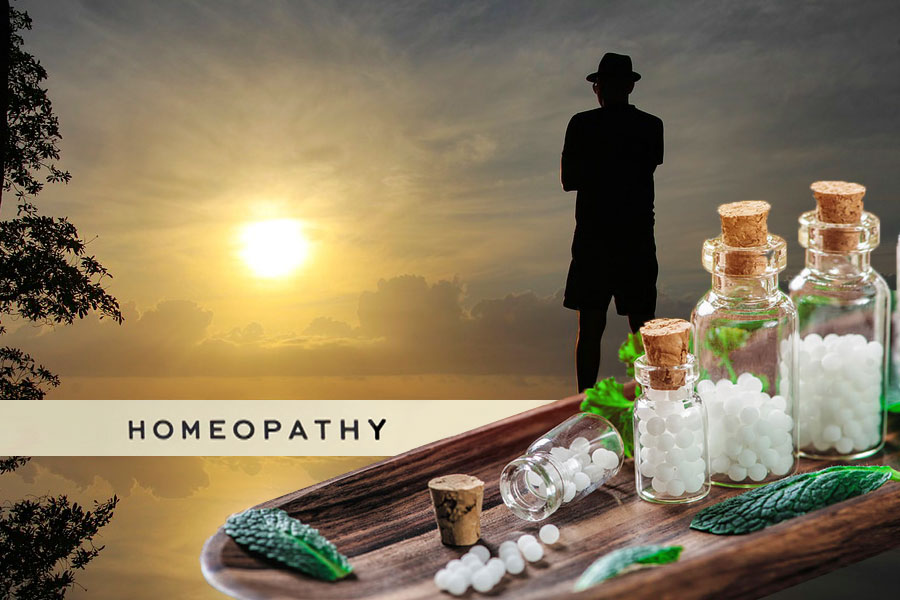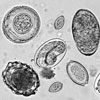The Homeopath’s View Of Health And Disease ~ Part II
 by Dr. Peter Glidden, ND
by Dr. Peter Glidden, ND
I would like to continue to talk a little more about Homeopathic medicine. It is a subject that is close to my heart, very interesting and very misunderstood. Its history also quite clearly reveals allopathic hypocrisy. So I can’t walk away from it without a little more additional lucidity.
A nice book to help you understand the evolution of homeopathic medicine in the U.S. is: Copeland’s Cure – By Natalie Robins; Published by Knopf. ISBN 0-375-41090-2. Indeed, this subject demands an entire book to explain it properly, and I have no desire to take on that task, especially since Ms. Robbins has already done such a good job. But there are a few salient points about homeopathic medicine which are worthwhile discussing here for a few paragraphs at least, and in understanding them, our understanding of wholistic medicine will also mature, so here we go.
Homeopathy is comprised of 5 theoretical Laws of Nature:
1. The Law of Similars
2. The Law of the Single Remedy
3. Hering’s Law of Cure
4. The Law of Miasms
5. The Law of Potentization
It is interesting to note that when critics try to dismiss homeopathy, they exclusively focus on the 5th Law, and NEVER discuss any of the others. This is because the Law of Potentization seemingly flies in the face of our understanding of modern physics – so it is an easy target for critics. Ironically, the Law of Potentization is a relatively minor one to most homeopaths. It only describes how our medicines are made, not how we are to deliver them, not how the body responds to them, not how the body reacts to the stress of life in general, and not what the physician must do to bring about a cure. These subjects are all much more important and germane to the practical application of homeopathic medicine than the Law of Potentization, but that is what the critics of homeopathy get stuck on nevertheless. This is like going to a fantastic Broadway production of Cats, and then giving it a bad review by complaining that it is ridiculous to give animals human emotions/thoughts. It is a critique that completely misses the point.
I remember when I was a boy that science had no answer to the simple question: “How does a bumble bee fly?” According to the Laws of Physics, bumble bees were too heavy for their tiny little wings to provide enough lift to offset the pull of gravity and allow them to fly. This was evidenced by the fact that if you took a dead bird and spread out its wings, and threw it, it would glide for a short distance, but if you did the same thing to a dead bumble bee, it would just tumble end over end. That’s right – until March 20th, 2000, science could not explain why bumble bees could fly. So did scientists go around saying “Bumble bees don’t fly!” “It’s all an illusion!” “Don’t trust your eyes!” Of course not! It was logically assumed that there must be something else going on with the mechanics of the bumble bee’s wings that we were unaware of, and would one day eventually figure out. But this is exactly what the critics of homeopathy do. They arrogantly proclaim: “It doesn’t work!” “It can’t work!” “It’s all quackery.” “Don’t believe your eyes.” By focusing exclusively on the 5th Law, close-minded critics feel justified in completely discounting a system of medicine that has been curing people in clinical settings for over 200 years. If this criticism wasn’t so frustrating and dangerous, it would be laughable.
Here’s the reason for the criticism. According to the Law of Potentization, a homeopathic medicine that has been diluted well beyond Avogadro’s number will still retain its ability to produce a medicinal action in the body of anyone it is given to. “Avogadro’s number” is a numerical constant that chemists use to help them determine the concentration of different solutions. What this means in layman’s terms is that a homeopathic medicine, which has been diluted so much that there isn’t even one molecule of the original substance left in it, will still create a physiological effect when administered. What!? Sounds crazy, right? But this is exactly what happens time and time again.
A typical homeopathic medicine (referred to as a “remedy.”) has been diluted so much that it is impossible for even one MOLECULE of the original substance to remain in it, and yet – it produces pronounced physiological effects time after time. For a perspective of the dilution scale I am talking about here, let’s look at a swimming pool: There are approximately 1,032 molecules of water in an Olympic-sized swimming pool. If that pool were filled with a homeopathic remedy diluted to the 15C strength, to expect to get a single molecule from the original substance, one would need to swallow 1% of the volume of the pool, or roughly 25 metric tons of water! Amazing isn’t it. The medicines that homeopaths use to activate the Law of Similars are diluted to an unbelievable degree – and they still work! Instead of being awestruck by this paradoxical happenstance, and rushing to discover its mechanism, allopaths automatically dismiss the action of homeopathic remedies to the realm of “placebo.”
Instead of objectively observing what happens to patients under homeopathic care and then trying to figure out what is going on, the critics of homeopathy simply turn a blind eye to its clinical successes, and then discount it as being “utterly unscientific” because the Law of Potentization seems to defy the laws of physics. Once again, the allopaths hypocritically use a patently unscientific methodology to label something that they don’t like as “unscientific.”
What type of mental process is this a reflection of? Is it scientific? No! Is it dogmatic, close minded, reactionary, and unrepentant? Yes! Anybody who pooh-poohs homeopathy has had NO EXPERIENCE with the use of homeopathic medicines in a clinical setting, has NO IDEA of the 5 Laws of Homeopathy, and has probably never even read a homeopathic medical journal. Such an intellectual stance is insulting to the educated mind, but it is the norm in modern allopathic medical circles.
Did I mention that the typical homeopathic medicine costs about $10.00? That wasn’t a typo. Ten dollars! Is this what makes the pharmaceutical companies so nervous. It shouldn’t matter to them that inexpensive, safe, and gentle medicines capable of curing disease are available. Drug companies should just love that, shouldn’t they? I mean wouldn’t it be great for them if people could actually be cured of disease, and wouldn’t have to take those expensive drugs over and over again. People also wouldn’t have to suffer from years and years of adverse drug reactions and symptom suppression. Then they wouldn’t have to take more drugs for the new symptoms that the suppressed symptoms drummed up. Not to mention the enormous amount of money people would save. Shouldn’t the drug companies just love that? Oh! Right! Probably not… The mere fact that drug companies are against homeopathic medical treatment should be a RED FLAG to the intelligent reader, and make him/her run to the nearest homeopath for treatment.
One day, someone will discover the mechanism that supports the phenomenon of the Law of Potentization, and then the homeopaths will be vindicated. This will be a discovery on par with uncovering the structure of DNA. It will be a revolutionary scientific breakthrough. In the mean time, homeopaths will just have to quietly keep curing people with inexpensive, safe and gentle medicines.
************
The following information was excerpted from the website of “The National Center For Homeopathy.” (Their website is: www.homeopathic.org) Homeopathic medicine was first used for a wide-scale epidemic in 1801 when its founder, German physician Samuel Hahnemann MD, observed that a child who was being treated with a homeopathic preparation of belladonna resisted scarlet fever even though all three siblings were affected. Wondering whether the belladonna had acted preventively, Hahnemann began giving it to children in other families when the first ones fell ill, and he found it to be protective despite a 90% attack rate among the untreated. The method was so successful that regular physicians adopted it and by 1838 the Prussian government made its use mandatory.
More recently, in the USA, homeopathy was used in the Influenza Pandemic of 1920. The illness struck with such force that people often died within 24 hours. Twenty percent of the entire world population was infected and 20-40 million people died. The Journal of the American Institute of Homeopathy, May, 1921, had a long article about the use of homeopathy in the flu epidemic. Dr. T. A. McCann, from Dayton, Ohio reported that 24,000 cases of flu treated allopathically had a mortality rate of 28.2% while 26,000 cases of flu treated homeopathically had a mortality rate of 1.05%. This last figure was supported by Dean W.A. Pearson of Philadelphia (Hahnemann College) who collected 26,795 cases of flu treated with homeopathy with the above result. Dr. Herbert A. Roberts from Derby, CT, said that 30 physicians in Connecticut responded to his request for data. They reported 6,602 cases with 55 deaths, which is less than 1%. Dr. Roberts was working as a physician on a troop ship during WWI. He had 81 cases of flu on the way over to Europe. He reported, “All recovered and were landed. Every man received homeopathic treatment. One (other) ship (that used conventional medicine) lost 31 on the way.”
Excerpt from Excerpt from The MD Emperor Has No Clothes
The Complete Book of Family Homeopathic Medicine
Homeopathic Self Care: The Quick and Easy Guide for the Whole Family
Homeopathic Prescribing Pocket Companion
See Part II here.
Posted in Health, Other Topicswith 1 comment.






I believe that the phenomenon your speaking of concerning potentization is due to the fact that water has memory and it is able to carry messages. Dr. Emo to I believe is the science twists name who discovered that water has mwmory. Just a thought. Thank you for this informative and truthful article.